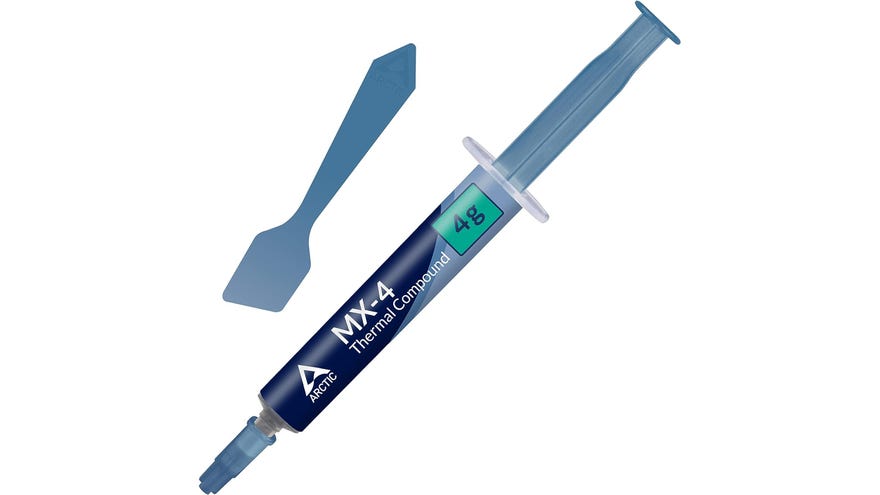Installing a new CPU? Get Arctic's MX-4 thermal paste with a wee spatula for $5.56
A smart pickup, especially for larger Ryzen 7000 and Intel 12th/13th-gen CPUs.
Just bought an awesome new CPU after a friendly RPS deals writer found a great deal on one? Worried about covering that massive IHS with thermal paste? Don't worry - you can pick up Arctic's popular MX-4 compound thermal paste for $5.56 today and it comes with a tiny spatula, perfect for ensuring full coverage even on modern extra-large processors like Intel's 12th/13th-gen chips, AMD's Ryzen 7000 chips and even workstation-class products like ThreadRipper. This stuff normally costs $9, making this a cool 38% discount.
Glib intro aside, we are starting to see an interesting cottage industry forming around modern CPUs due to their higher power usage, corresponding heat output and physically larger designs than past generations. CPU delidding seems to be getting more popular, alongside exotic substances like liquid metal getting more mainstream attention from PC makers and PC builders alike, and there are even offset mounting bars and CPU contact frames that are designed to maximise cooling performance on these larger units.
Even if you don't bother with anything like that, thermal paste application seems now to be a matter of grave importance. Where once a single blob of thermal paste would do the job, now a line, X or spatula-painted layer often come recommended; I tend to opt for the first option after noticing that I wasn't getting full coverage with the traditional dot in my CPU testing. Now don't get me wrong - more advanced processes mean that new CPUs are more power-efficient than ever for a set amount of performance - but especially for high-end Intel options, it's an area of the PC build that you should be putting more thought into.
Beyond the intial installation procedure, I find it useful to monitor CPU temperatures in stress situations like high refresh rate gaming, video transcoding or 3D rendering. Something like MSI Afterburner and RTSS are great here, but you may prefer something like HWInfo64 to see how your CPU temperature changes over time.
What do you make of the latest CPU trends, how do you apply your thermal paste and what software, if any, do you use to monitor temps? Let me know in the comments below!

